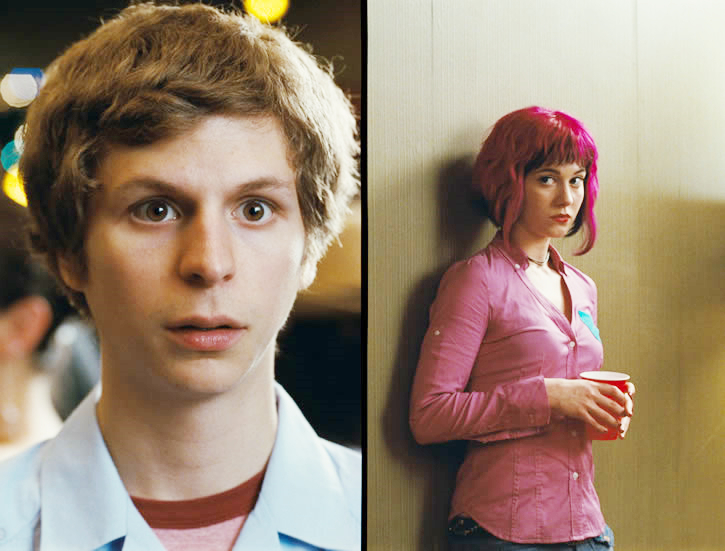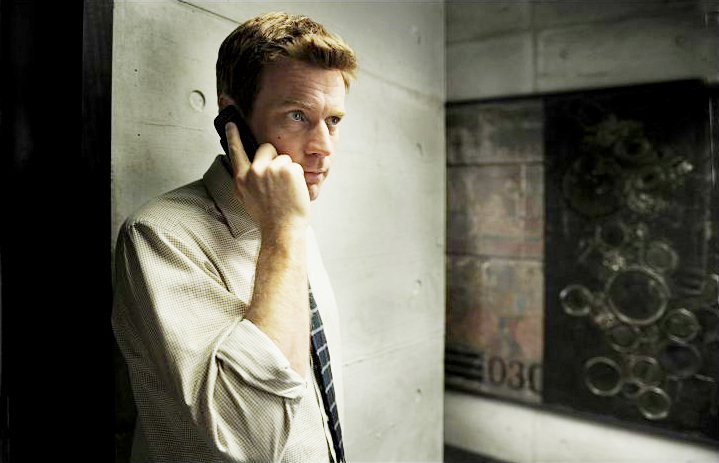With Snooki set, and the earth embarking on another tour around the sun, it must be time for the 2010 movie round-up. As always, there are a few contender films I haven’t yet seen — Blue Valentine opens here next weekend, for example. But, as it happens, I did see quite a few more movies than usual this year — an added bonus to having a full-time, non-gradual school income again. In any case, without further ado, the…
Top 20 Films of 2010
[2000/2001/2002/2003/2004/2005/2006/2007/2008/2009/The Oughts]

1. Toy Story 3: I kept expecting some other movie to come along in the second half of 2010 and knock this lachrymose Pixar masterpiece out of the top spot. But, in a not particularly great year for movies, Lee Unkrich’s surprisingly sad and soulful Toy Story 3 held onto the crown. (As it turns out, the highest grossing film of the year was also the best.) Basically, this is the movie about fleeting youth and fading plastic that Spike Jonze’s Where the Wild Things Are wanted to be. And, while I’m still not sure if kids will vibe into the melancholy shenanigans here at all, it touched a chord in more than one aging man-child out there…just ask QT.

2. The Red Riding Trilogy: Amid the moors of the North, there is an evil that does not sleep. Originally a TV miniseries in Britain, the Red Riding trilogy — 1974, 1980 and 1983 — counted as full-fledged movies for those of us stateside. And, while perhaps too grim for some tastes, this three-part, nine-year inquiry into black deeds in Yorkshire was as immersive and transporting a movie experience as there was in 2010. (The problem was, you didn’t necessarily want to be where it transported you.) True, the third film was weaker than the first two installments. But taken as a whole, this was one gritty and impressive crime saga, with a number of memorable turns by Paddy Considine, Andrew Garfield, Mark Addy, Rebecca Hall, Peter Mullan and others.

3. The Secret in Their Eyes: Alas, you will find no respite from the Yorkshire darkness in the Argentina of the Dirty War. Earlier in the year, I had A Prophet ranked above this movie, the Best Foreign Film winner of 2009. (It was released here in 2010.) But Juan Jose Campanella’s haunting picture has grown in my memory in the months since. Like Red Riding, this is another wistful investigation into murder, missed opportunities, and the choices we make, one that sticks with you well after the theater lights come up.

4. True Grit: For the third time in four years, the Coens make the top five. (See also No Country for Old Men and A Serious Man.) And while I concede to being a bit of a Coen fanboy, I’m guessing this retelling of the John Wayne classic stands on its own merits. The occasional quirk aside, this is the brothers’ Straight Story, and, as I said in the original review, it feels like an unearthed and quintessentially American coming-of-age tale. The travails of Ree Dolly may have been the cat’s meow to many critics this year, but, when it comes to teenage girls facing a heap of adversity, I myself cottoned to the western adventures of Matty Ross.

5. The Social Network: With top-notch work from David Fincher, Trent Reznor, and the entire cast, The Social Network has a crisp, sleek, and entertaining interface to be sure. On an intellectual level, it’s definitely one of the most purely enjoyable movies of the year. But I still find this film somewhat dubious in terms of content. It works better as a Shakespearean tale of ambition and betrayal — Richard III by way of Revenge of the Nerds — than it does a legitimate recreation of the origins of Facebook. Still, given that much of the action takes place at a university whose motto is Veritas (“Truth”) and yet whose most prominent landmark is the “Statue of the Three Lies,” I guess I should probably forgive TSN its many factual screw-ups. Print the legend and all that.

6. A Prophet: Call it the Antisocial Network: Another 2009 foreign film that made it here in 2010, Jacques Audiard’s novelistic, keenly observed A Prophet — about a young prisoner learning to survive and thrive in the interstices of a cross-cultural jailyard — was another of the best films of the year. A Prophet can feel slow at times, and it’s not an experience I’m likely to revisit anytime soon. But it’s this film’s continual attention to the devastating detail that makes it a prison movie to remember.

7. Inception: Just as he did with The Prestige after Batman Begins, Christopher Nolan took a mental health break from Gotham City after The Dark Knight by crafting this mindbending sorbet, the best “summer movie thrillride” experience of 2010. (The only other ones that come close are #9 below and the first-half of Tron: Legacy.) I still wish Inception was a bit more ragged in its dreaming, and, like a dream, it makes more sense when you’re watching it than when you think back on it later. Nonetheless, Inception was great fun throughout, and if nothing else, it spawned one of my favorite new Internet memes.

8. The Fighter: I just saw this one over the weekend, so it has no review up yet. Suffice to say, I was pleasantly surprised by David O’Russell’s chronicle of the comeback of welterweight “Irish” Micky Ward, the pride of Lowell, Massachusetts. In fact, I had the opposite experience here that I had with The King’s Speech. There was a potentially interesting story told extremely conventionally, while this is a tried and tested sports movie formula — a boxer with one last shot at a title — that still felt fresh and invigorating. True, the seven Ward sisters were a bit much — They were the only time this boxing movie veered toward the egregious cartoon rednecks of Million Dollar Baby. But otherwise, solid performances by Mark Wahlberg, Melissa Leo, Amy Adams and especially Christian Bale give this could’ve-been-by-the-numbers film a much-needed heart.

9. Kick-Ass: Capitalizing on the promise he showed in Layer Cake, director Matthew Vaughn brought to life the most engaging comic book reverie of 2010 with Kick-Ass, his warmer, more colorful take on the Mark Millar comic. This film saw Nicolas Cage continue his Bad Lieutenant mini-revival, Mark Strong continue to hone his talent for instant Big-Bad gravitas (see also: Sherlock Holmes, 2011’s Green Lantern), and, like a bat out of Hell (or New Mexico, for that matter), 13-year-old Chloe Moretz become an out-and-out, foul-mouthed, ass-kicking action star. Few films this year were as fun as this one.

10. Exit Through the Gift Shop: As this potentially faux-documentary explains: Before he exposed the sweatshops under Springfield, British provocateur Banksy set the world of street art careening over the shark by encouraging Thierry Guetta, a.k.a. Mr. Brainwash, to get in the graffiti game. It’s still an open question whether Banksy’s disastrous creation of MBW was inadvertent or just his latest well-crafted skewering of the powers-that-be. Either way, Exit Through the Gift Shop, about the rise and fall of street art, is a merry prank indeed.

11. Harry Potter & the Deathly Hallows: While the Harry Potter books grew distended and clumsy in the home stretch, the movie series continues to gain steam along that last low road to Hogwarts. In bringing to life the first half of Hallows, David Yates has made arguably the best Potter film yet, and not just because he has the good sense to riff on Brazil therein. The danger feels more palpable, the hopping around the countryside feels less episodic, and, after a decade of doing this, the Big Three wear their characters naturally now. Here’s hoping Harry Potter and the Battalion of Thespians manage to close things out as smoothly this summer.

12. Inside Job: You think Banksy got away with a grift? Check this one out. Pinning its high-profile subject to the mat much more successfully than did Alex Gibney’s Casino Jack documentary, Inside Job impressively lays out the causes and (lack of) consequences of the Great Wall Street meltdown of 2008. Those would be a swollen, rapacious, and unregulated financial services sector, and a government that, even after the Big Bust, still bends over backward to appease it. The only real problem with Inside Job is the feedback loop — The only folks likely to see this film are the same ones who already know the story and are enraged by it. Still, I’m glad it’s there, and at least it’s encouraging economists to clean up their act.

13. Scott Pilgrim vs. the World: Like I said back in August, Scott Pilgrim seems to have gone the way of the much-maligned Speed Racer. As visually inventive as it was, Pilgrim didn’t make much of a splash at the box office. But even if its fanboy fan service tendencies still rankle, Edgar Wright’s ode to geek crushes and the g4m3r life deserved more love than it got on the first play, so hopefully it enjoys several more lives on Blu Ray and beyond.

14. The Town: Admittedly, Boston is getting a bit peaked as Hollywood’s go-to destination for white working-class crime stories of late (Mystic River, The Departed, Gone Baby Gone.) That being said, Ben Affleck’s “Beantown Heat” was a strong, well-made, and entertaining ensemble film with a good sense of place and charisma to burn. Everyone from Jon Hamm and Rebecca Hall to Chris Cooper and the late Pete Postlethwaite bring their A-game here, with special kudos to Jeremy Renner as Affleck’s crazy-like-a-fox pahtnuh-in-crime.

15. The Most Dangerous Man in America: Daniel Ellsberg and the Pentagon Papers: After watching Inside Job, you might wonder why our government is in such a furor over Julian Assange and Wikileaks when crimes like constructing an illegal torture regime and, oh, causing an worldwide global economic meltdown seem to go unpunished. And after watching Ellsberg, you might think we’ve seen this movie before anyway. (Just take it from the man himself.) Constructed like a conspiracy thriller, Ellsberg is a testament to the notion that sometimes whistle-blowing — the only “misdeed” our current administration can seem to get angry about these days — may in fact be a higher form of patriotism. However you feel about Ellsberg and Wikileaks, this is a compelling documentary about tough choices in contentious times.

16. Never Let Me Go: Like The Secret In Their Eyes, this quiet, elegiac sci-fi film has risen in my estimation in the months since I saw it. Keira Knightley is still a drag on the production, and all of the characters a bit too locked-in for my taste — If they were so invested in one plan to avoid their fate, they should’ve been more willing to contemplate other avenues of escape as well. Still, also like The Secret In Their Eyes, this is a movie whose mood of reticent mourning lingers on.

17. Terribly Happy: How do you say “Blood Simple” in Danish? This weird Coenesque ditty about a sheriff with a troubled past investigating Something Rotten in Denmark was yet another late arrival to these shores — It premiered in Europe in 2008. And yet, once again, it was among the best 2010 had to offer. Let’s hope the pattern holds and right now, some of the best films of this year are already kicking around other continents, ready to be unleashed.

18. The King’s Speech: I wrote about this one rather recently, so my views on it haven’t changed much. This is a undeniably well-made, well-written, and well-performed film, but I found its sports-movie structure and Merchant-Ivory bromance all a bit pat. Still, Colin Firth in particular is excellent here — With this and A Single Man, he’s aging into a more interesting actor than he was before. Consider it his Baldwinning.

19. The Ghost Writer: As he pieces together the memoirs of England’s ex-PM, boilerplate and boredom are the least of Ewan MacGregor’s worries — He also has surveillance men and femmes fatale to contend with. Ghost, welcome to the Machine! This conspiratorial yarn isn’t a particularly deep film — more just a cheeky throwback to 70’s paranoia thrillers and an extended screw-you to the departed Tony Blair. Still, whatever his other sins, Roman Polanski fashioned a brisk and entertaining cloak-and-dagger flick here.

20. The Kids Are All Right: I thought about Get Him to the Greek, Greenberg, and Shutter Island for this last spot. But, in the end, I gave the nod to this, Lisa Cholodenko’s well-observed slice of family life in 21st century California. This is a small and unassuming film, but one that does what it does quite well — It takes a number of well-drawn characters and lets them breathe and bounce off each other.
Most Disappointing: Alice in Wonderland: An embarrassment to the Carroll book: Tim Burton and Johnny Depp have never seemed so uninspired together.
Worth Netflixing: 44-Inch Chest, The American, A Single Man (2009), Crazy Heart (2009), Daybreakers, The Eclipse, Get Him to the Greek, Greenberg, The Imaginarium of Dr. Parnassus (2009), Knight and Day, Let Me In, Life During Wartime, The Lovely Bones (2009), Shutter Island, Splice, The Square, Tron: Legacy, Wall Street: Money Never Sleeps, Winter’s Bone, Youth in Revolt
Don’t Bother: The Art of the Steal, Black Swan, The Book of Eli, Brooklyn’s Finest, Casino Jack and the USM, Catfish, Clash of the Titans, The Girl with the Dragon Tattoo, Green Zone, Hot Tub Time Machine, Invictus (2009), Iron Man 2, Jonah Hex, Legion, The Losers, Machete, Red, Robin Hood, Salt, Sweetgrass, The Tourist, The Werewolf, The White Ribbon
Best Actor: Ricardo Darin, The Secret In Their Eyes, Tahar Rahim, A Prophet; Colin Firth, The King’s Speech
Best Actress: Natalie Portman, Black Swan; Jennifer Lawrence, Winter’s Bone, Haylee Steinfeld, True Grit
Best Supporting Actor: Christian Bale, The Fighter; Jeremy Renner, The Town; Andrew Garfield, The Social Network/Never Let Me Go
Best Supporting Actress: Chloe Moretz, Kick-Ass, Amy Adams, The Fighter; Charlotte Rampling, Life During Wartime
Unseen: 127 Hours, The A-Team, All Good Things, Animal Kingdom, Another Year, Blue Valentine, Buried, Burlesque, Carlos, Casino Jack, Centurion, Chloe, The Chronicles of Narnia: Voyage of the Dawn Treader, Coco Chanel and Igor Stravinsky, Conviction, Cop Out, Country Strong, The Crazies, Creation, Date Night, Despicable Me, Devil, Dinner for Schmucks, Easy A, Eat, Pray, Love, Edge of Darkness, The Expendables, Extraordinary Measures, Fair Game, Fish Tank, Four Lions, From Paris with Love, Get Low, The Good, The Bad, and the Weird, Gulliver’s Travels, Harry Brown, Hereafter, How Do You Know?, Howl, I am Love, The Illusionist, I Love You, Phillip Morris, I’m Still Here, Jackass 3D, Jack Goes Boating, The Karate Kid, The Killer Inside Me, The Last Exorcism, The Last Station, Leap Year, Little Fockers, MacGruber, Made in Dagenham, Micmacs, Monsters, Mother, The Next Three Days, Nightmare on Elm Street, The Other Guys, Paranormal Activity 2, Percy Jackson and the Lightning Thief, Please Give, Predators, The Prince of Persia, Rabbit Hole, Rare Exports, Repo Men, Secretariat, Shrek Forever After, Skyline, Somewhere, The Sorcerer’s Apprentice, Step Up 3D, Survival of the Dead, Takers, Tangled, The Tempest, Tiny Furniture, Twilight: Eclipse, Unstoppable, Valentine’s Day, Vincere, When In Rome, You Will Meet a Tall Dark Stranger
A Good Year For:
- Abduction as Seduction (Knight & Day, Red, The Tourist)
- Andrew Garfield (Red Riding, The Social Network, Never Let Me Go)
- Aussie Noir (The Square, Animal Kingdom)
- Charlotte Rampling (Life During Wartime, Never Let Me Go)
- Chloe Moretz (Kick-Ass, Let Me In)
- Ghostly Ex’s (Life During Wartime, The Eclipse)
- The Dude’s Paternal Side (Tron: Legacy, True Grit)
- Working-class Bay Staters (The Town, The Fighter)
A Bad Year For:
- Angelina Jolie (Salt, The Tourist)
- Art Museums (Exit Through the Gift Shop, Art of the Steal)
- B-level DC Heroes (Jonah Hex, The Losers)
- Eighties Remakes (Karate Kid, Nightmare on Elm Street)
- Johnny Depp (Alice in Wonderland, The Tourist)
- Leo’s Sanity (Inception, Shutter Island)
- The Street (Inside Job, Wall Street 2)
2011: 5 Days in August, 30 Minutes or Less, The Adjustment Bureau, Albert Nobbs, Amigo, Anonymous, Arthur, Arthur Christmas, Bad Teacher, Barney’s Version, Battle: Los Angeles, The Beaver, Beginners, Bernie, The Big Year, Black Gold, Brighton Rock, Caesar: Rise of the Apes, Captain America: The First Avenger, Cars 2, Cedar Rapids, Colombiana, Conan the Barbarian, The Conspirator, Contagion, Coriolanus, Cowboys and Aliens, Damsels in Distress, A Dangerous Method, The Darkest Hour, The Debt, The Deep Blue Sea, The Descendants, Don’t Be Afraid of the Dark, Drive Angry, The Eagle, The Factory, The Fields, Friends with Benefits, Fright Night, The Girl with the Dragon Tattoo, The Green Hornet, Green Lantern, The Guard, The Hangover Part 2, Hanna, Harry Potter and the Deathly Hallows Part 2, Haywire, I am Number Four, Jane Eyre, Larry Crowne, Limitless, Mission Impossible: Ghost Protocol, Moneyball, The Muppets, Paul, Pirates of the Caribbean: On Stranger Tides, Priest, Rango, Sanctum, Scream 4, Season of the Witch, Sherlock Holmes 2, Source Code, Straw Dogs, Sucker Punch, Super 8, The Thing, Thor, The Tree of Life, The Way Back, X-Men: First Class, Your Highness, and…

Thundering Son of a Sea-Gherkin! It’s Tintin!






































